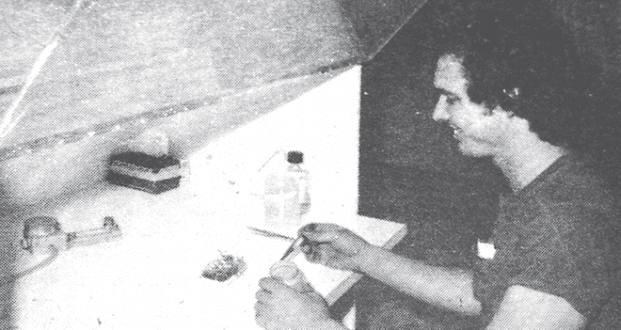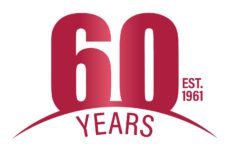

Aug 2, 2021FGN’s 60th Anniversary: Hartmann’s used tissue culture for propagation
Editor’s note: Hartmann’s blueberry operation in Grand Junction, Michigan, has been in existence for more than 75 years. The following is an excerpt from a story published in the April 1982 issue of Great Lakes Fruit Growers News, the forerunner of Fruit Growers News.
A new front has been opened in the propagation of blueberry plants with the introduction of tissue culture at Hartmann’s Plantation Inc., Grand Junction, Michigan.


Easily the largest blueberry plant propagators in the world, the Hartmann family has operated a nursery since 1944, when they started to grow blueberries on their farm located in the northwestern part of Van Buren County, about seven miles inland from Lake Michigan.
Now the nursery occupies 2.5 acres under plastic, and has grown most rapidly during the past nine years, said Danny Hartmann, the family member who has spearheaded the family’s initial experimentation and now the move toward commercial adaptation of tissue culture as the means of propagating blueberry plants.
“Our goal is to propagate all of our plants by tissue culture within two years,” said Danny Hartmann, who added that “we haven’t sold a single plant yet propagated by this method.” This means that so far they are continuing to employ the traditional means of propagation for their customers.
When the Hartmann family does finally make the final transition to tissue culture, the extent of this can be appreciated by the size of the nursery that is operated along with a commercial blueberry plantation.
Danny Hartmann said that three years ago he also set as a goal the sale of 1 million blueberry plants, and this number was exceeded in 1981 with sales now reaching toward 2 million plants … “still a way off, however,” he admitted.
“Our sales may consist of anywhere from one plant to more than 100,000 plants to a single customer,” he said. The varieties sold by the Hartmanns in their nursery are for the most part the same ones they grow commercially on 75 acres of land.
“This helps us to be able to tell other growers buying stock exactly what a particular variety has done for us as commercial growers ourselves,” Dennis Hartmann said.
Danny and Dennis are two of the six children of Mr. and Mrs. Pat Hartmann, who took over the plantation from his father and mother, Mr. and Mrs. Edward Hartmann, who launched the enterprise in 1944. This means that the Hartmann family has grown blueberries commercially in the Grand Junction area for 38 years (as of 1982).
The other Hartmann children, all involved in the farming operation, are Pat Jr., Jim, Annie and Kathy.
Five years ago, Pat Hartmann began dividing his time between the Michigan operation and Florida after buying noted blubbery plant breed Arthur Elliott’s plantation in the Earlton area of north Florida, south of Hawthorne. He also purchased a 160-acre farm near Hampton for blueberry production.
Both Florida farms are managed by Jim Hartmann and his wife, Kathy. Another member of the family who is active in the business is Miss Margie Hartmann, sister of Pat Hartmann Sr., who serves as secretary and handles bookkeeping chores at Grand Junction.
Danny Hartmann said that they sell plants in virtually every state in the country, Canada, New Zealand and throughout Europe. Sales take place year-round, although the majority of the plants are shipped in containers from Grand Junction between October and June.
Blue Crop is the leader in sales followed in order by Blue Jay, Blue Ray, Elliot and Northland.
In their commercial plantation the Hartmanns planted eight acres of Blue Jay in the spring of 1980. This variety is a 1978 Michigan State University (MSU) release that should be ready for the initial harvest in 1985.
They also are growing five acres each of Northland, a 1965 MSU introduction, and Elliot, which was introduced in 1974 by the USDA. Other varieties they grow are Collins, Blue Ray, Blue Crop, and Jersey.
The blueberries are harvested with a machine manufactured by BEI, located at South Haven, Michigan. In fact, last August they purchased the prototype of a new BEI harvester.
All of the blueberries grown commercially at the Hartmann Plantation are marketed through the Michigan Blueberry Growers Association, Grand Junction.
Although Danny Hartmann said they have “just been experimenting up to this time with tissue culture,” the intensity of this experimentation has placed them on the brink of a commercial breakthrough. “This is a new thing in blueberries,” said Danny Hartmann, who added: “We have a lot of problems to overcome.”
Three years ago they constructed their 26 x 26-foot building to be used as a laboratory. This building consists of two rooms with both of them maintained in as sterile a condition as possible to prevent contamination to the plant.
Two years ago they used tissue culture to propagate their first blueberry plants experimentally. “I knew little if anything about tissue culture, but gradually worked through most of the problems,” Danny Hartmann continued.
The idea for tissue culture came to the Hartmanns from Pat Hartmann’s brother, James Hartmann, who is a plant pathologist at Florida Atlantic University, Boca Raton, Florida. “Without his support and influence, it’s doubtful we ever would have started,” Danny Hartmann said.
Some of the advantages of incorporating tissue culture into a nursery operation include: 1) faster-growing plants; 2) better quality; 3) minimize disease; and 4) propagation of greater number of plants.
Danny Hartmann noted that with traditional methods of propagation, up to 10 years might be required to grow a quantity of plants, 10,000 for example, and with tissue culture this period can be reduced to two years for the same number.
He said that although comparable costs have not been worked out year, it would appear that tissue culture is in the same range as the traditional method of propagation. This will apply to any variety, he said.
In addition to tissue culture, the Hartmann family has a number of innovations in the blueberry industry to its credit. For example, Pat Hartmann built a packer into the fresh market line for pint containers of blueberries. With three people running the machine, up to 200 cases can be packed hourly. The packer is now being handled by BEI.
The Hartmanns also were among the first blueberry growers to use a water line in their packing line. Now others have followed their lead and installed water lines themselves.
These and other innovations taking place at the Hartmann plantation are a tribute to Pat Hartmann who has always encouraged his children to try new ideas, including tissue culture, and make whatever inputs are necessary for them to work as a practical part of the farming enterprise.
— Gary Pullano, editor














